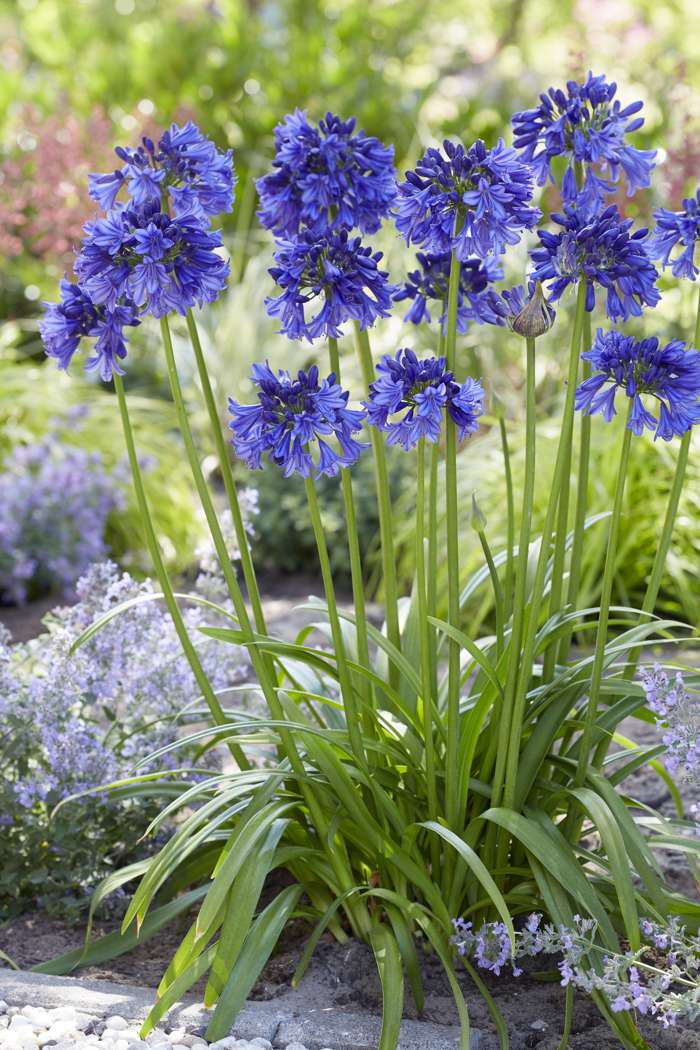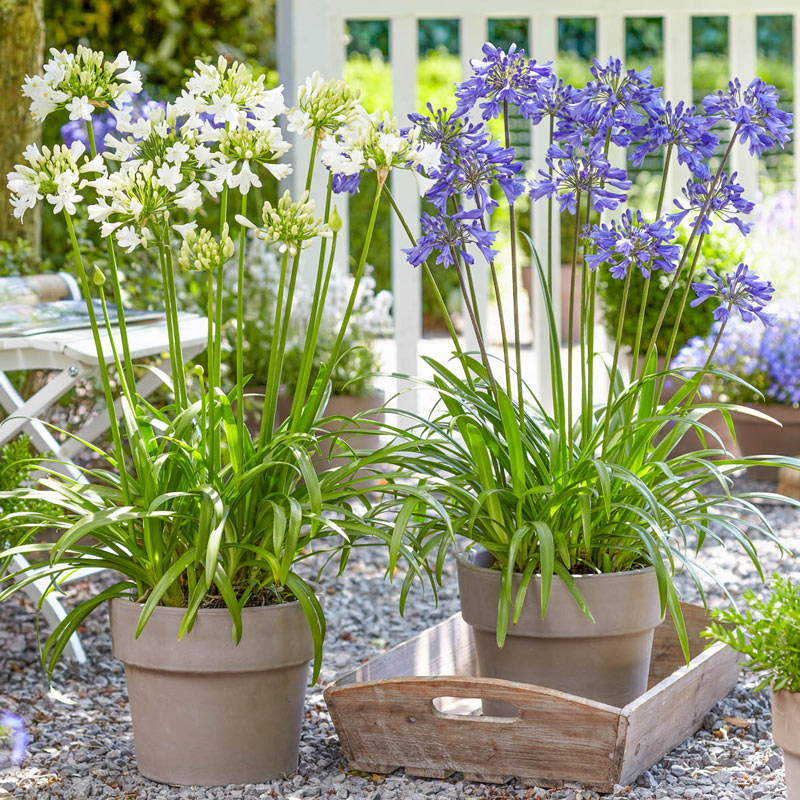Letting Loose the Secret to Successful Agapanthus Farming: Idea for a Flourishing Yard
In the world of gardening, cultivating agapanthus successfully requires a tactical method that encompasses various facets of plant treatment. With careful focus to detail, one can unlock the keys to nurturing these sensational blossoms, bring about a garden that grows with elegance and vibrancy. By comprehending the nuances of agapanthus cultivation, one can create an atmosphere where these plants thrive and flower perfectly. In the following conversation, we will check out necessary ideas and techniques that will guide you towards a growing agapanthus yard, providing understandings into finest practices, dirt conditions, sprinkling techniques, and a lot more.
Growing Agapanthus: Finest Practices
When growing Agapanthus, proper dirt prep work is important for making sure successful development and growth of these attractive flowers. Agapanthus, typically known as Lily of the Nile or African lily, flourishes in well-draining dirt with a slightly acidic to neutral pH degree - Agapanthus. Before planting, it is vital to modify heavy clay dirts with raw material such as compost or peat moss to improve water drainage and give essential nutrients for the plants
To grow Agapanthus, choose an area that receives complete sunlight to partial shade, as this will promote healthy growth and abundant blooming. Dig a hole two times the diameter of the plant's root sphere and position the Agapanthus at the exact same depth it was previously growing. Delicately backfill the hole with soil, pressing down firmly to get rid of any air pockets around the roots.
Water the recently grown Agapanthus thoroughly and continue to maintain the soil uniformly damp, especially during the plant's energetic expanding season. Agapanthus. Applying a well balanced fertilizer once a month can better support the plant's development and flowering. By complying with these ideal practices for planting Agapanthus, you can create a magnificent display screen of these exciting blossoms in your yard
Ideal Dirt Issues for Agapanthus
For ideal development and flowering success of Agapanthus plants, ensuring the soil problems are ideal is crucial. Agapanthus chooses soil that is rich in nutrients, so integrating a well balanced fertilizer during the growing season can promote healthy growth and lively blooms.

Watering and Feeding Tips
To make certain healthy development and dynamic blossoms, correct watering and fertilizing methods are important for successful Agapanthus growing. Agapanthus plants profit from normal watering, especially throughout the growing period.
When it involves fertilizing Agapanthus, a well balanced fertilizer with equivalent parts nitrogen, phosphorus, and potassium can be applied in the spring to advertise healthy and balanced growth and flowering. Slow-release fertilizers are optimal for giving nutrients slowly over a prolonged period. Prevent over-fertilizing, as this can cause excessive foliage development at the cost of blossoms.
Furthermore, including raw material like compost into the dirt can enhance nutrient degrees and improve dirt framework, aiding in the overall health of the Agapanthus plants. By following these watering and fertilizing pointers, garden enthusiasts can guarantee their Agapanthus plants prosper and create stunning displays of flowers.
Pruning and Deadheading Strategies
Appropriate trimming and deadheading strategies play a vital duty in maintaining the health and wellness and visual appeals of Agapanthus plants, enhancing the vital techniques of watering and feeding for successful growing. Trimming Agapanthus involves removing spent flower heads, yellowing or dead fallen leaves, and general shaping of the plant to promote much better development. Deadheading, the procedure of removing faded flowers, not just improves the plant's appearance yet also motivates further flowering.
When deadheading Agapanthus, it is a good idea to read more clip off the blossom stem at the base making use of sharp, clean shears. This process reroutes the plant's energy from seed production back right into origin and foliage growth, advertising a healthier and a lot more durable plant. Normal deadheading can extend the flowering period of Agapanthus and protect against self-seeding, which can lead to congestion.
In terms of pruning, Agapanthus generally advantages from a light trim after blossoming to tidy up the plant and urge fresh growth. Cutting down the invested blossom stems and getting rid of any kind of broken or dead vegetation aids preserve the plant's vitality and total look. Nevertheless, it is crucial to stay clear of cutting into the crown of the plant, as this can compromise its health and wellness.

Protecting Agapanthus From Vermins and Diseases
Applying effective bug and disease monitoring techniques is vital to protecting the health and vitality of Agapanthus plants in cultivation. Agapanthus are generally sturdy plants, but they Visit This Link can still succumb numerous parasites and conditions if not properly taken care of. One typical bug that affects Agapanthus is the Agapanthus borer, a caterpillar that passages right into the plant, triggering damage to the leaves and blossoms. To avoid invasions, routine examination of the plants is important. If borers are detected, they can be by hand eliminated, or insecticidal soap can be utilized as a control step.
In addition to parasites, Agapanthus are vulnerable to diseases such as origin rot and fungal leaf places. By staying attentive and attending to pest and disease problems quickly, garden enthusiasts can help their Agapanthus prosper and prosper.

Final Thought
Finally, effective growing of agapanthus requires appropriate planting strategies, optimal soil problems, ample watering and fertilizing, routine trimming and deadheading, and security from bugs and diseases. By following these methods and tips, garden enthusiasts can guarantee a growing garden loaded with attractive agapanthus blossoms. Agapanthus. Keep in mind to keep regular treatment and attention to detail navigate to this site to promote the health and wellness and durability of these magnificent plants
When growing Agapanthus, proper soil prep work is necessary for guaranteeing successful growth and growth of these beautiful blossoms.Water the recently grown Agapanthus thoroughly and continue to keep the dirt evenly damp, particularly during the plant's energetic growing season.For optimum growth and flowering success of Agapanthus plants, making sure the soil conditions are optimal is critical. When hair transplanting or growing Agapanthus, ensure the dirt is well-prepared to provide the essential structure for the plants to develop themselves efficiently. One typical parasite that impacts Agapanthus is the Agapanthus borer, a caterpillar that passages right into the plant, creating damage to the fallen leaves and blossoms.